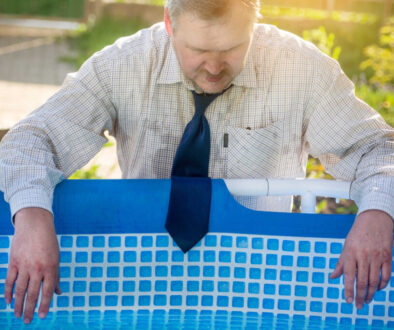Discover how to use Standard Operating Procedures (SOPs) effectively to streamline operations and scale your pool route business successfully.
How to Use SOPs to Scale Your Pool Route
In the pool maintenance industry, as with many service-oriented businesses, having a structured approach to operations can be the difference between success and stagnation. Standard Operating Procedures (SOPs) provide a framework that can help you streamline processes, ensure consistency, and ultimately scale your pool route business. This blog post will explore how to implement SOPs effectively, the benefits they offer, and how they can be tailored to your specific needs in the pool service industry.
Understanding the Importance of SOPs
Standard Operating Procedures (SOPs) are documented processes that outline how tasks should be performed within a business. In the context of the pool maintenance industry, SOPs can cover a wide range of operations, from routine cleaning and maintenance tasks to customer service protocols. By establishing clear guidelines, you create a reliable and efficient working environment that can lead to increased productivity and customer satisfaction.
For instance, having an SOP for pool cleaning not only ensures that each service technician follows the same process but also helps maintain high-quality service standards. According to a survey conducted by the National Association of Pool Professionals (NAPP), businesses that implement SOPs report a 30% increase in productivity and a significant enhancement in customer retention rates.
Creating Effective SOPs for Your Pool Route
When developing SOPs for your pool route business, it’s essential to focus on clarity and practicality. Start by identifying the core operations that require standardized procedures. These may include:
- Service protocols for different types of pools (e.g., in-ground vs. above-ground).
- Customer communication guidelines, including how to handle complaints and service requests.
- Safety procedures to ensure technician and customer safety during service.
- Inventory management processes for cleaning supplies and equipment.
Once you’ve identified these key areas, work on drafting clear, step-by-step instructions. Use simple language, bullet points, and visual aids where necessary to enhance understanding. For example, if you’re creating an SOP for pool cleaning, include diagrams or photos of proper techniques and equipment usage. This not only helps your team follow the procedures but also serves as a training tool for new hires.
Implementing SOPs Across Your Team
After developing your SOPs, the next step is implementation. Communicate the importance of these procedures to your team and involve them in the process. Conduct training sessions to review the SOPs and ensure that everyone understands their significance and application.
Regularly revisiting SOPs and encouraging feedback from your team is crucial. This not only fosters a culture of continuous improvement but also helps identify areas where adjustments may be necessary. For example, if a technician finds a step in the pool cleaning SOP inefficient, they should feel empowered to suggest changes that could enhance the process.
Measuring the Impact of SOPs
To evaluate the effectiveness of your SOPs, establish key performance indicators (KPIs) that align with your business goals. These KPIs could include metrics such as:
- Time taken to complete routine maintenance tasks.
- Customer satisfaction scores.
- Rate of service-related complaints.
- Employee turnover rates.
By tracking these metrics, you can gauge how well your SOPs are working and make informed decisions about adjustments or enhancements. For example, if customer satisfaction scores increase after implementing a new communication SOP, that’s a clear sign that your strategies are effective.
Leveraging Technology to Enhance SOPs
In today’s digital age, leveraging technology can further streamline the implementation of SOPs. Consider using project management tools or dedicated software for service businesses that allow you to store, access, and update SOPs easily. Applications like Trello or Asana can help assign tasks and ensure that everyone is on the same page regarding their responsibilities.
Moreover, utilizing customer relationship management (CRM) software can enhance the determination of how SOPs affect customer interactions. A robust CRM system can track customer communications, service history, and satisfaction levels, which can provide invaluable data for refining your SOPs.
Expanding Your SOPs for Growth
As your business grows, so will the complexity of your operations. It’s vital to regularly review and update your SOPs to reflect new services, technologies, or changes in the market. SOPs should evolve alongside your business to remain relevant and effective.
For instance, if you expand your pool service offerings to include maintenance of hot tubs or spas, you’ll need to develop new SOPs tailored to these services. This not only maintains service quality but also helps new team members get up to speed quickly on new offerings.
Conclusion
In the competitive landscape of the pool maintenance industry, SOPs are not just beneficial; they are essential for scaling your pool route business efficiently. They provide a framework that ensures consistency, enhances customer satisfaction, and fosters a productive work environment. By following the steps outlined in this post—understanding the importance of SOPs, creating effective procedures, implementing them across your team, measuring impact, leveraging technology, and expanding as necessary—you are well on your way to achieving significant growth for your pool service business. If you’re interested in exploring pool routes for sale that can kickstart your journey toward success, don’t hesitate to check our options at [Pool Routes for Sale](https://pool-routes-for-sale.com/). Start your journey today and watch your business thrive!



